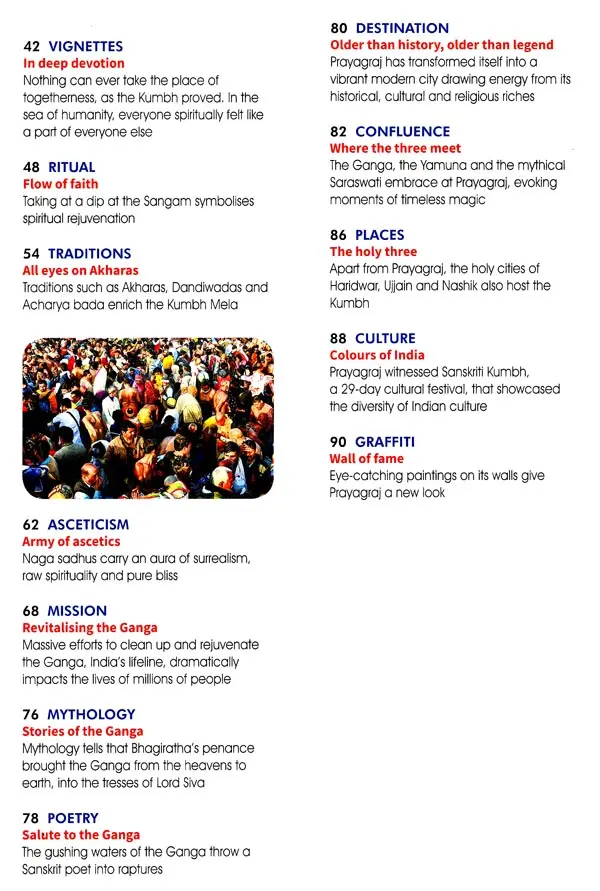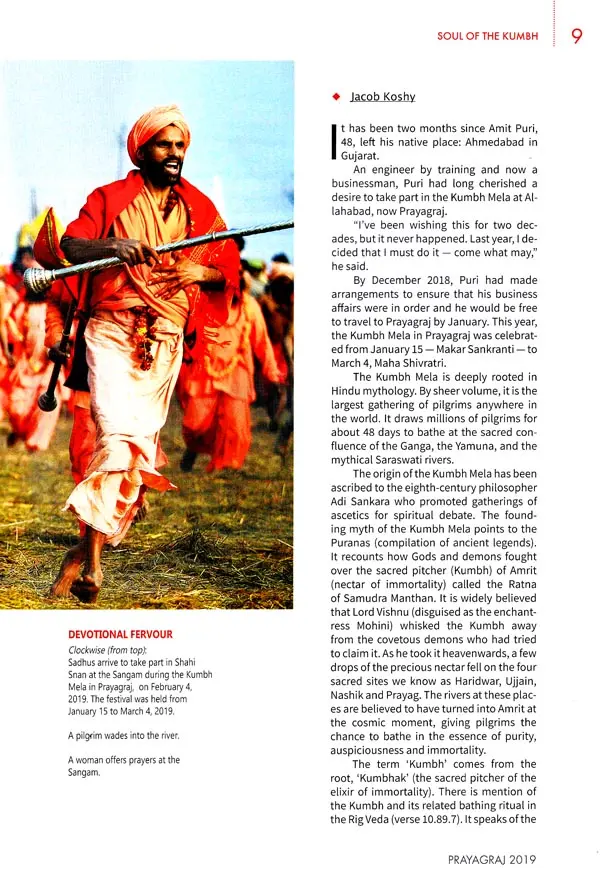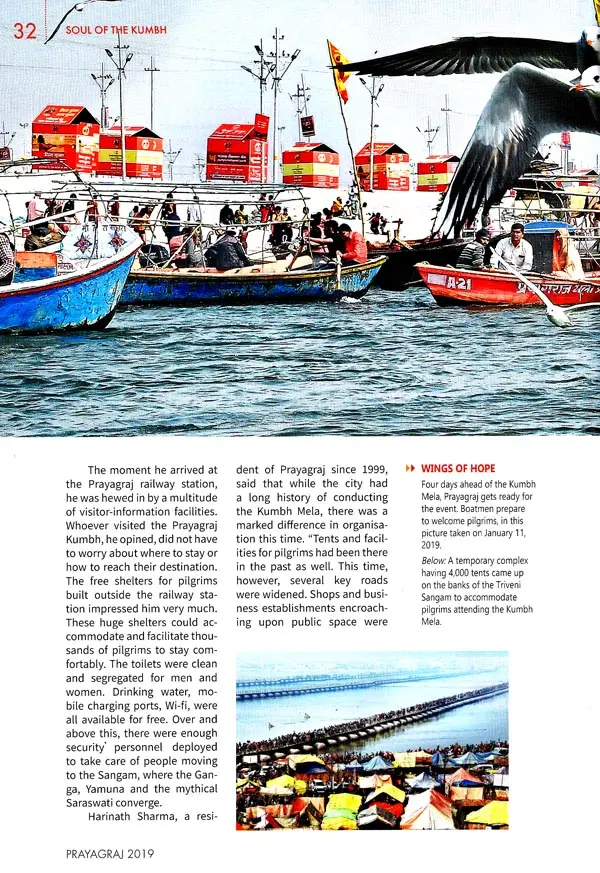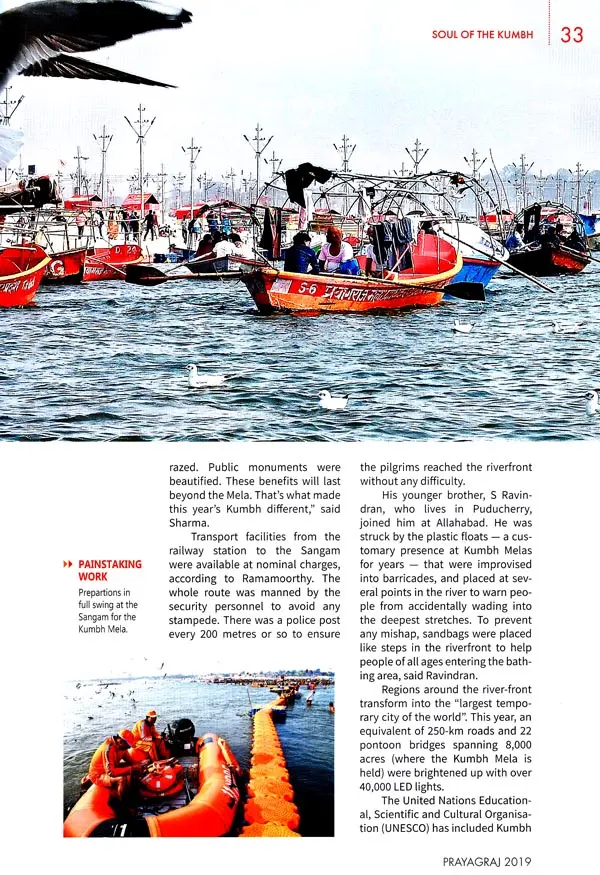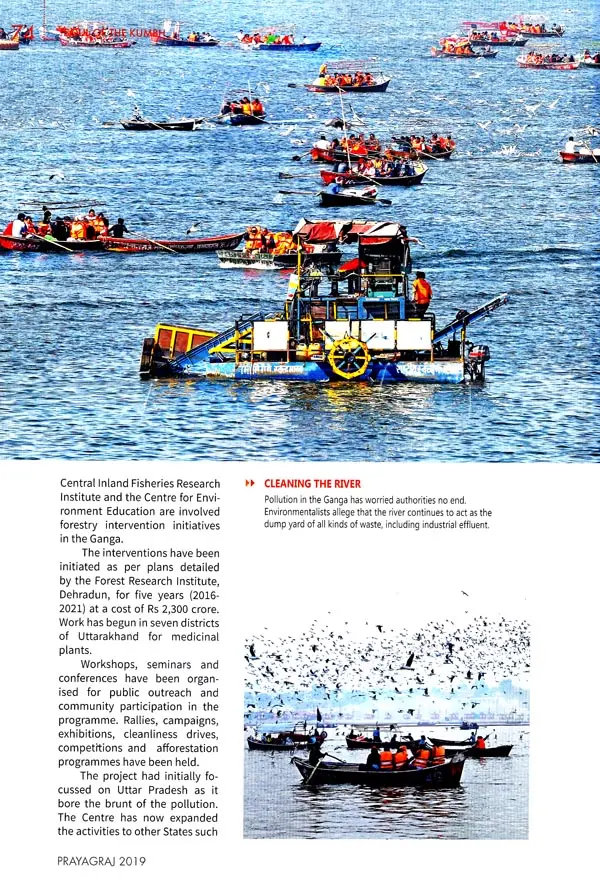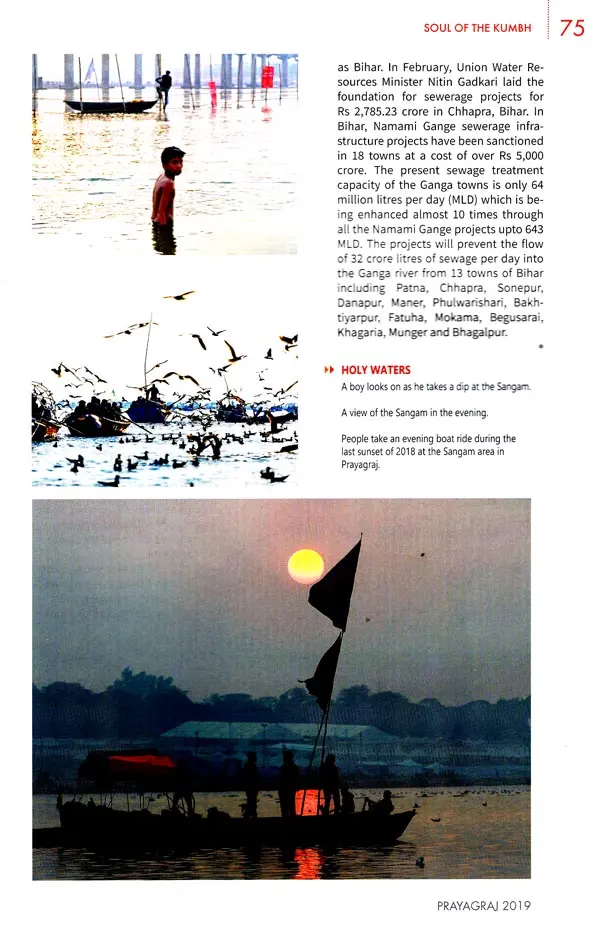
Soul of the Kumbh : Prayagraj 2019
Book Specification
| Item Code: | UAG658 |
| Publisher: | THG Publishing P. Ltd., Chennai |
| Language: | English |
| Edition: | 2019 |
| ISBN: | 9789387791411 |
| Pages: | 104 (Throughout Color Illustrations) |
| Cover: | PAPERBACK |
| Other Details | 11.50 X 8.50 inch |
| Weight | 350 gm |
Book Description
Prayagraj, earlier Allahabad, counts among the lands that have seen footprints in huge numbers Here unfolds the Kumbh Mela, one of the largest human gatherings and mass events on earth, time after time.
The Kumbh is a convergence of philosophy and spirituality, retheon and faith, mythology and astrology. It is at the confluence of the Ganga, the Yamuna and the mythical Saraswati the Sangam Millions take a dip here during the 48 day festival, in a ceremonial snaan or bathing ritual, which they believe will rejuvenate and cleanse them. With its striking rituals, age old traditions, cultural undercurrents, and the colossal gathering, the event has permeated India's collective consciousness over time. The Hindu pays tribute to this boundless and open festival, with a special volume.
The mythological and ethical interpretations of the Kumbh point to the fight between good and evil, the devas and the asuras. Drops of the nectar of immortality and purity, yielded by the churning of the milky ocean, fall on sites that host the festival, goes the leg end. Myths apart, the festival pays tribute to rivers, the backbone of civilisation and the elixir of life. It worships the Ganga and the Yamuna as perennial fountains of prosperity.
The Ganga waters most of the Indian plains. Chief among its tributaries are the Yamuna on the right bank and the Ghaghara, the Gandak and the Kosi on the left bank. All of them emerge from the Himalayas.
Where the Ganga and the Yamuna meet arose Prayagraj. The city was once Prayag and Kausambi. Historians maintain it was a thriving Buddhist centre. To its east lies Jhusi, the ancient Pratisthanpur, the capital of the Chandras; to its west lies the medieval Kara fort, bearing testimony to the Rajput Jayachand's influence, Akbar gave Allahabad the status of a Mughal suba, or provincial capital, building a fort overlooking the Yamuna. An Ashoka pillar there speaks of the influence of the Mauryans. The Marathas pillaged Allahabad before the British declared it the capital the North West provinces in 1834. In 1857, the mutinous sepoys of the First War of Independence captured the city. It later became a centre of India's freedom movement. Indeed, in 1888, Allahabad hosted the fourth session of the Indian National Congress.
This volume looks at the spiritual meanings of the Kumbh, its rituals and its Akharas (congregations). It presents accounts on the development of infrastructure for the festival and efforts to clean up the Ganga.
**Contents and Sample Pages**

